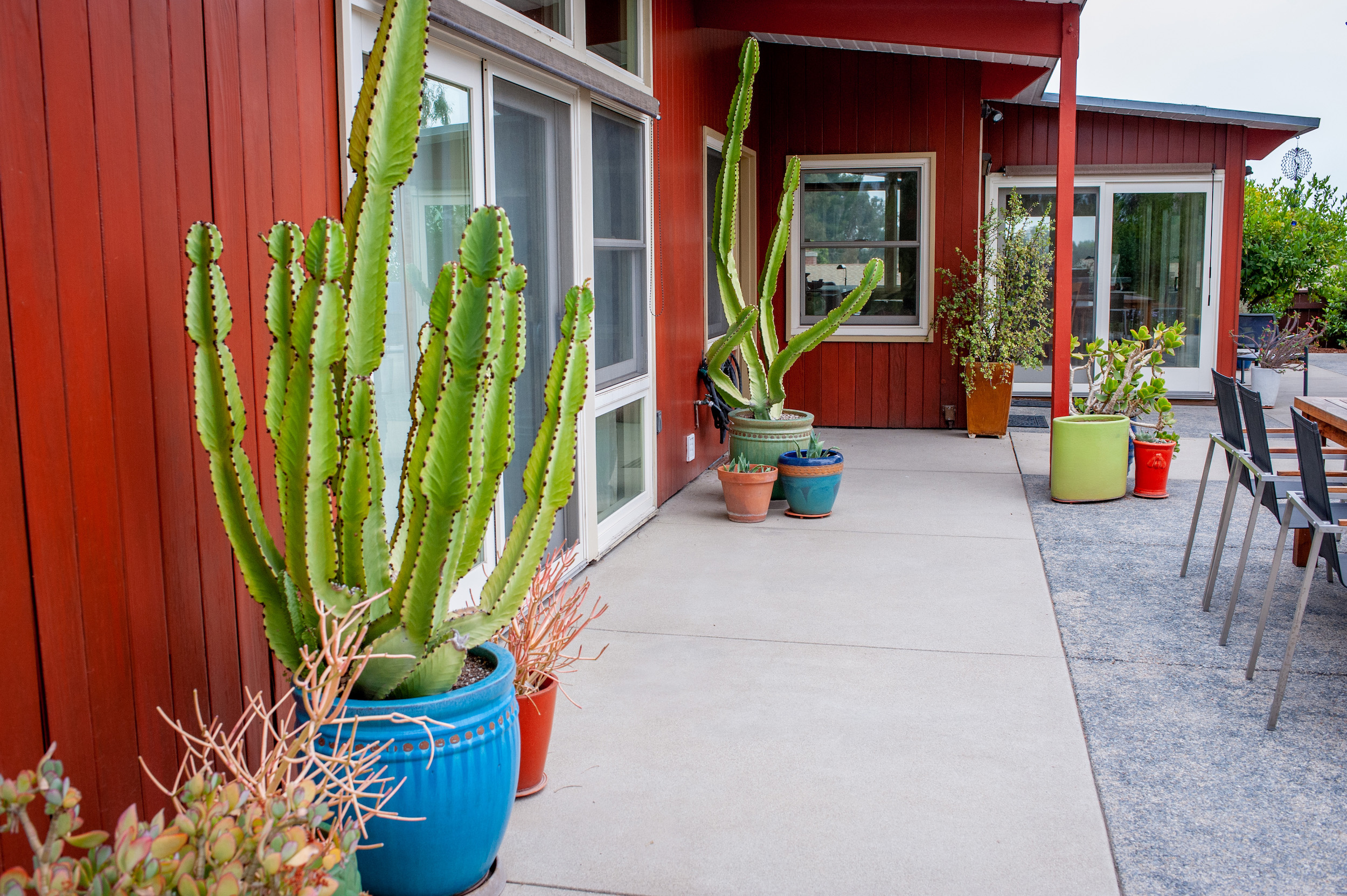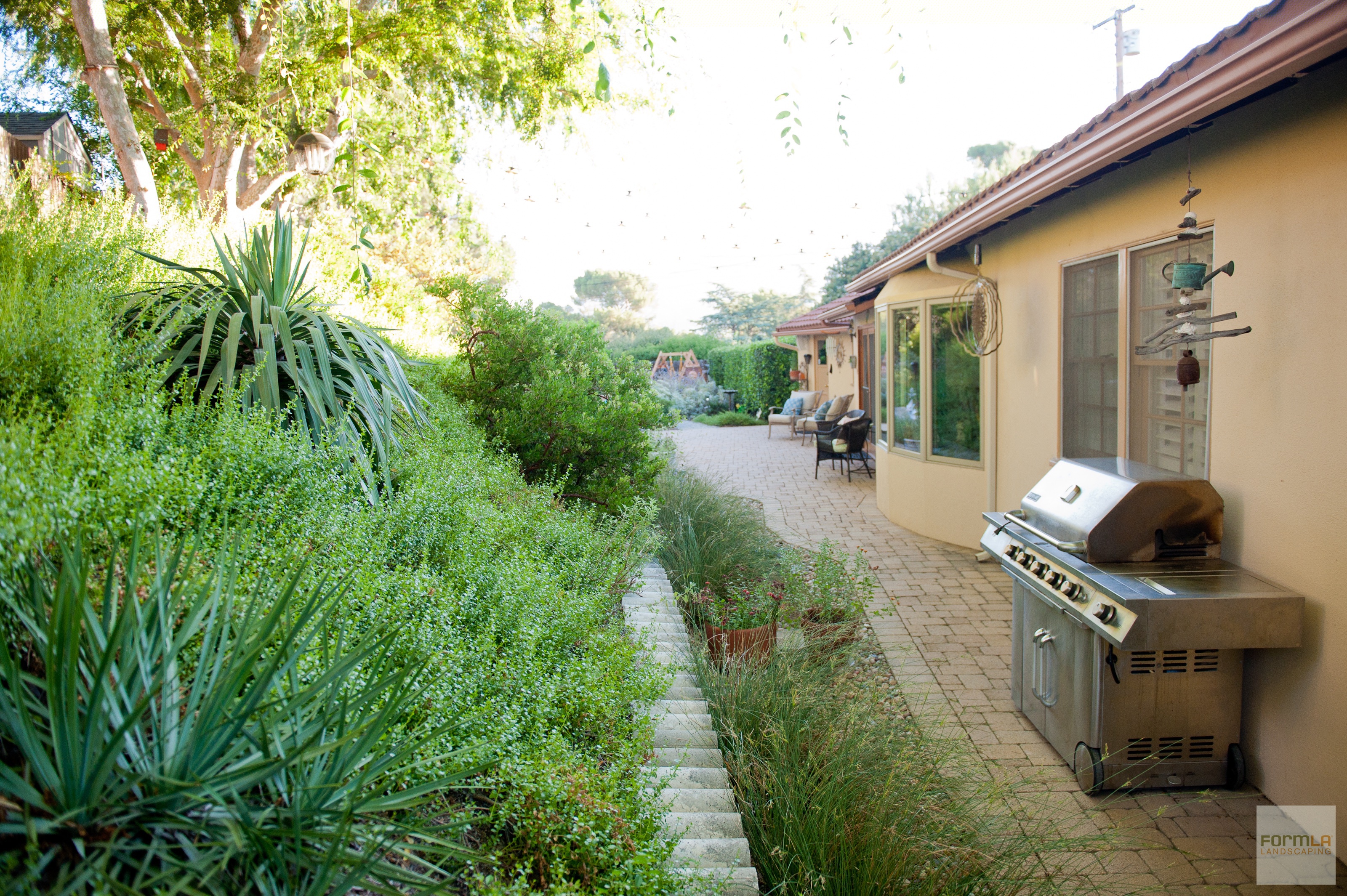New fire risk reduction requirements protects homes and fire fighters
Updated October 2023: Most landscape enhancements add delight or convenience to daily living. The creation of a “Zone 0” is no exception – yet it can also have dramatic impact on safety. Here’s what we understand about the latest fire risk reduction recommendations.

Where is Zone 0?
The California Board of Forestry and Fire Protection defines Zone 0 as the 0-5 feet closest to a home at ground level. It’s also called the “ember resistant zone,” where materials like gravel and cement encourage embers to burn out before they can build enough heat to ignite a home. In the photo above, the Zone 0 is the off-white concrete band closest to the home’s foundation.
Why do I need a Zone 0?
The Insurance Institute for Business & Home Safety research shows that wind-driven embers are responsible for more than 90 percent of home ignitions. They can ignite a home while leaving hydrated foliage intact, as our homes are often made of and surrounded by highly flammable man-made materials. An effective Zone 0 reduces the chances of home ignition by removing these materials and, therefore, opportunities for embers to build heat near a home.
The benefits of a Zone 0 extend beyond a single home. Every home with an ember resistant Zone 0 amplifies the safety its neighbors, as home fires cast more dangerous ember storms than fires burning natural materials.
Fire fighters have another reason to encourage the creation of Zone 0s. This is the area they need to safely defend a home that has ignited. To protect them as they protect properties, this zone will be free of trip hazards as well as flammable materials.

When do I need to have a Zone 0?
Safety impacts are profound, so for those in or near high fire severity areas, we encourage immediate creation of Zone 0s or taking steps in that direction. Defending your home from wildfire can also help with insurance.
Note: In the summer of 2023, we expected fire department enforcement to begin in 2024. It is now expected in 2025 for new homes and 2026 for existing homes.

Which materials are allowed in a Zone 0?
At the ground level 0-5 feet from the home, ember resistant materials (gravel, concrete, stone, etc.) and well-irrigated low growing foliage, including natural lawns, are currently allowed.
Beyond ground level, well-irrigated, well-maintained, non-woody foliage is allowed. Mature, living tree trunks, canopy, and foliage can be within 0-5 feet, as long as they are 6 inches from siding, 10 feet from the roof, and “limbed up” from the ground.

Which materials are not allowed Zone 0?
At the ground level 0-5 feet from the home, mulch and synthetic turf must be removed, as well as unirrigated foliage. Each of these materials can ignite and allow embers to build heat against the home.
Above ground level, detached storage, fences and gates, and woody foliage (e.g. Junipers, Cedars, Palms) pose dangers and should be removed. Decks are considered part of the home – Zone 0 includes any under-deck area as well as 5 feet from the deck.
Some items require assessment and ongoing homeowner attention. Items such as awnings, shades, furnishings, outdoor kitchens, portable BBQs, pet homes, garbage and recycling receptacles, and vehicles should be stored when not in use. This is particularly true on red flag days.

What does a Zone 0 look like?
We know what you are thinking – don’t worry! We’ve got you! An effective Zone 0 doesn’t need to 0-out your curb appeal or lifestyle. In fact, it can be an opportunity to enhance both when its materials complement the architecture and take your daily lifestyle into consideration. See More Examples
How much will it cost to create a Zone 0?
The cost of creating a Zone 0 depends upon the circumference of a home, its current Zone 0 contents, and the ember-resistant materials chosen. The Resource Conservation District of the Santa Monica Mountains (RCDSMM) currently has a waitlist for grants to cover the creation of free Zone 0s in specific LA-area communities.